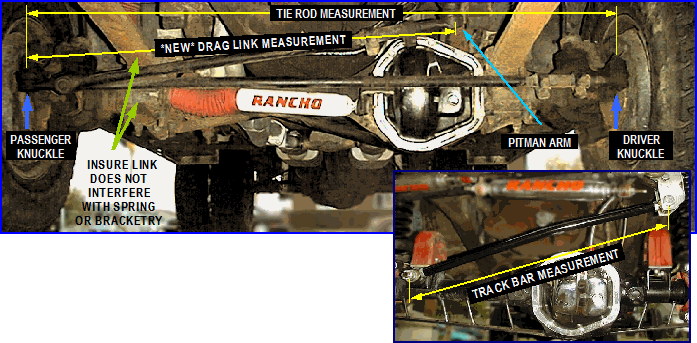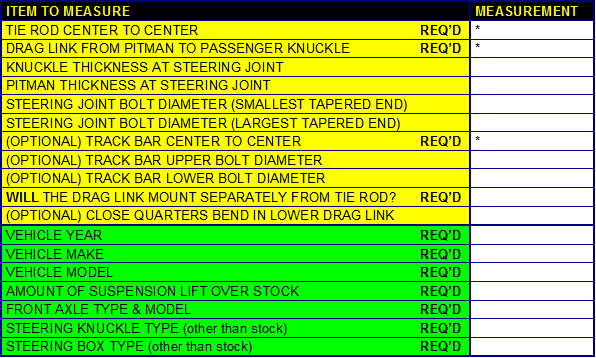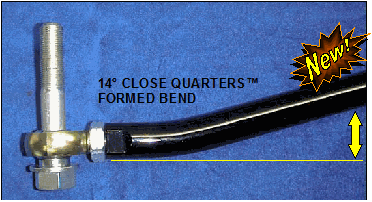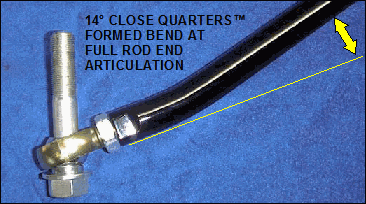|
With the wheels centered straight ahead, measure the tie rod from knuckle to knuckle, at the center of each bolt. Do NOT measure the grease fittings. If you have a side to side mounted drag link equipped vehicle (as above), then measure the distance from the passenger side knuckle to the pitman arm, at the center of each bolt. Do NOT measure the existing drag link, since the new one will be mounting in as new location on the passenger knuckle. Even if you have what appears to be a perfectly aligned vehicle, you can maximize the performance of your Bullet Proof Steering System by insuring your front end is accurately aligned and that your steering box is centered within it's travel to provide maximum lock to lock travel in both directions before measuring and ordering your system. To check this, LOOK HERE.
Then measure the thickness of the knuckle height, and the pitman or steering arm to get you the correct length bolts. Find the largest diameter of the tapered hole where the tie rod fastens. Insure that the front end alignment is correct, so that accurate measurements will be achieved.
To measure the track bar, measure from the center of the upper track bar bolt to the center of the lower track bar bolt. Not all vehicles have track bar, and those do not need this feature. For a track bar equipped vehicle not having a track bar present, and with the wheels centered straight ahead, measure the track bar mounts from hole to hole, at the center of each bolt. Insure that the front end side to side alignment is correct, so that accurate measurements can be achieved.
If you need a custom designed and bent track bar, submit a full scale template as described on this page SEEN HERE.
If you are reasonably sure your current linkage and front end is lined up correctly, then measure guide as ILLUSTRATED ABOVE. If your linkage is bent or non-existent, then LOOK HERE. If your vehicle is on jack stands or the front end is out, then LOOK HERE. If there is no track bar in the vehicle and wish to measure for a new one, then LOOK HERE.
We find it best to design our steering with as much of the threads engaged for both strength purposes, as well as allowing for maximum adjustment in case the tie rod gets bent in an off road situation, where the ends can be adjusted outwards to get back on the trail again. So, make the necessary compensations for potential errors (too long, too short) when providing your exact measurements upon ordering.
|
|





